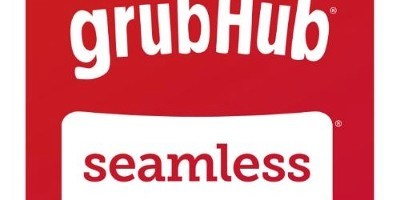GrubHub: Seamlessly Taking Over Delivery?

Leveraging two-sided network effects, GrubHub has established a solid grip on the meal delivery service industry. With many new entrants, however, the industry may be becoming commoditized, and the strength of these network effects will soon be put to the test.
From the customer’s point of view, GrubHub is a no-brainer. Why turn to your drawer of paper takeout menus when you could view all restaurants that deliver online, read customer reviews, see estimated delivery times, and receive email confirmation and updates on the status of your order? GrubHub has leveraged two-sided network effects. The more users it acquires, the more restaurants sign on, which in turn draws more users.
The platform is in some ways beneficial for restaurants too. First, it expands their customer base, introducing their business to customers who may have never found them otherwise. Secondly, it provides an online ordering platform and technology to small, often family-run, restaurants that lack the capital to invest in online ordering systems. Finally, it connects them to a network of delivery drivers, an otherwise high fixed cost that many restaurants could not cover on their own. But there are some drawbacks for the restaurants too. GrubHub reportedly takes an average 14% commission on every order, plus additional fees on credit card transactions. The commission rate is variable, with those restaurants who elect to pay higher commissions getting priority in the platform’s sorting algorithm. While GrubHub handles customer collection, it also holds funds for 30-40 days before passing them on to the restaurant, which poses working capital challenges for many of these cash-strapped businesses.
So how does GrubHub plan to sustain its grip on the takeout industry? In 2013, GrubHub merged with its largest competitor, Seamless, taking out one of its biggest potential threats. This merger drew the attention of anti-trust officials. Shortly after the announcement, GrubHub inked a deal with the New York attorney general that lets restaurants out of their exclusive relationships with GrubHub within 45 days. GrubHub is in part counting on network effects to sustain its business. Restaurants will go to whichever platform has the most customers, and once customers have created accounts and entered credit card information with GrubHub, they become relatively sticky to the platform. Seamless (now part of GrubHub) has also historically served numerous corporate accounts and currently dominates the market for dinner delivery to Manhattan investment banks and law firms.
Still, the switching costs aren’t so high. Competitor Delivery.com has lured many new customers with discounts, and many consumers have accounts on both GrubHub and Delivery.com. Delivery.com has also implemented a customer loyalty program whereby customers accumulate points with each order, arguably making them more sticky to Delivery.com’s platform. Some suspect that Yelp could become a player in the online delivery industry, leveraging its huge existing base of local restaurant reviews. Most recently, on September 8, Amazon announced plans to launch its own meal delivery service in Seattle. The service will allow Amazon Prime members to order from participating Seattle restaurants through their Prime Now app, with delivery at no charge. Amazon will handle the delivery and will take a commission on the order from restaurants. Despite the larger user and vendor base GrubHub has built, it seems plausible that if a deep-pocketed player like Amazon were to enter the market and offer lower commissions, restaurants would bee eager to sign on, and the switching costs for consumers doesn’t seem so high either. The meal delivery business seems to be becoming commoditized, and although network effects exist, their strength will soon be tested.



Great post! It’s very smart that GrubHub contractually prevents multi-homing, which appears to be a major threat to the business model – especially given how much they are charging restaurants. However, I wonder if peer-to-peer delivery services will win the day on food delivery given the peakiness in demand and the need for grubhub to support an employee based that is presumably under-utilized most of the day. Here, they will probably end up competing on cost, quality, speed, and ease of ordering, which are much harder to profitably outperform on.
Really interesting and hard to see how a clear winner could emerge in as crowded and fragmented a space as food delivery. It seems like the bargaining power for restaurants has historically been low, allowing GrubHub/Seamless to charge high rates and lock vendors into exclusive contracts. I wonder how that will change with the increasing number of players entering the space and ability for customers to multi-home easily.